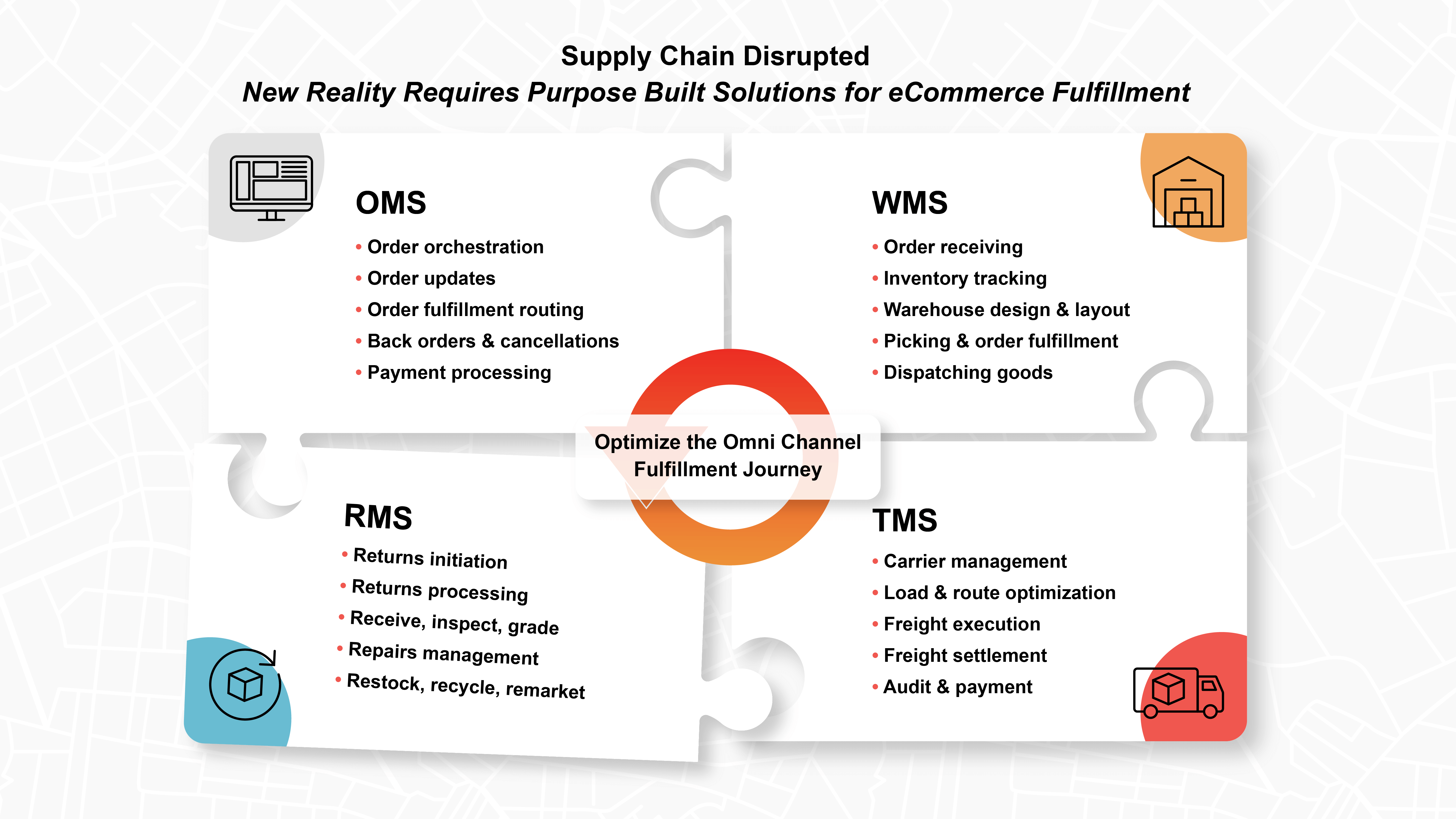Managing Returns: Here's Why Most Companies Use the Wrong Tools

As consumers increasingly shop online, the volume of product returns is skyrocketing. According to Retail Dive…
This volume shift to online is here to stay; 2021 e-commerce sales are expected to grow by an additional 13.7%…The dangerous news for retailers is that around 20% to 30% of products ordered online are returned, as compared to only 9% in brick-and-mortar stores.
The surge in product returns is driving a lot of frustration among retailers. Managing returns is costly, time consuming, and generates a huge amount of waste because many items are simply thrown away.
In a ReverseLogix research study conducted with Lead to Market, we uncovered why 70% of respondents are dissatisfied with their costly and complex returns process: Most are trying to manage returns with the wrong tools.
We found that 94% are attempting to handle product returns with a warehouse management system (30%), an ERP system (24%) and a logistics management system (20%), among other tools. A mere 6% are using a purpose-built returns management system.
What you’re missing with a WMS or ERP
A WMS or ERP can manage segments of the returns process, but that means you only get partial visibility, partial efficiency and partial control. If you’re relying on a patchwork of systems, you’re probably struggling in these key areas…
No visibility into the “why” behind returns
Without a 360-degree view of the returns process and returns data, retailers don’t understand why products are coming back. Is it a manufacturing defect? Did customers order several sizes and return what didn’t fit?
According to a Gartner report “The Contemporary Guide to Retail Supply Chain Excellence,” not a single retailer surveyed could answer the question: “Of all the orders that get returned to you, how often do consumers return the whole order versus just part of it?”
Without answers to these basic questions, retailers are playing a guessing game as to how returns processes can be improved. They’re risking throwing good money after the wrong problem.
Inconsistent policies and standards
If a retailer uses partner locations for return drop-offs or it outsources returns to a 3PL, standardized rules and policies across the network are critical. A WMS wasn’t designed to handle reverse logistics’ workflows, which leads to inconsistent practices and very different experiences for local customers.
Decision-making in the dark
How much does a return cost your organization? If an item is out of season, should it be thrown out or shipped to a different store? Without a total view of returns across locations and warehouses, a retailer can’t economically or efficiently manage returns processes. Decisions about priorities, inventory and employee workflows are partially informed and rarely effective.
How a returns management system solves the returns puzzle
Retailers are finally viewing reverse logistics as a priority piece of the supply chain. Mounting studies and surveys show that customer loyalty and the bottom line heavily depend on managing efficient and consistent returns.
A returns management system (RMS) purpose-built for eCommerce and omni-channel retailers is the final piece for optimizing the supply chain. Along with a WMS, transportation management system and order management system, it rounds out your core technology stack.

An RMS coordinates and streamlines every aspect of the returns journey and after-sales care management. It can be configured to a retailer’s processes and requirements, and it fully integrates with other supply chain solutions.
- Manages the entire, end-to-end returns process based on an organization’s specific needs
- Centralizes/analyzes returns-related data from other core supply chain software
- Fast implementation (often six weeks or less) and fast ROI
With more retailers using the right tool, managing product returns becomes less costly, faster, and easier for both your employees and your customers. In fact, ReverseLogix customers have reported up to a 5% increase in profits and a 15-25% jump in customer satisfaction after implementing an RMS to manage their returns.
